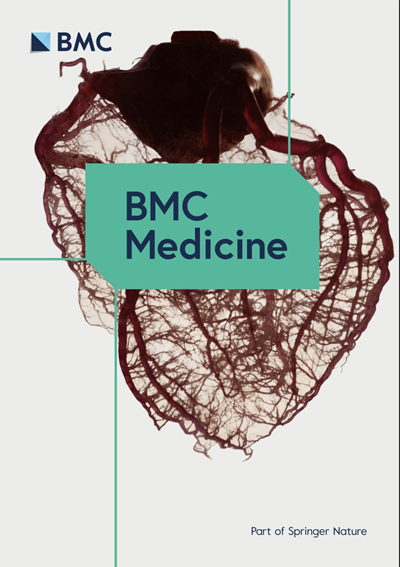A deep learning model for differentiating paediatric intracranial germ cell tumour subtypes and predicting survival with MRI: a multicentre prospective study
IF 7
1区 医学
Q1 MEDICINE, GENERAL & INTERNAL
引用次数: 0
Abstract
The pretherapeutic differentiation of subtypes of primary intracranial germ cell tumours (iGCTs), including germinomas (GEs) and nongerminomatous germ cell tumours (NGGCTs), is essential for clinical practice because of distinct treatment strategies and prognostic profiles of these diseases. This study aimed to develop a deep learning model, iGNet, to assist in the differentiation and prognostication of iGCT subtypes by employing pretherapeutic MR T2-weighted imaging. The iGNet model, which is based on the nnUNet architecture, was developed using a retrospective dataset of 280 pathologically confirmed iGCT patients. The training dataset included 83 GEs and 117 NGGCTs, while the retrospective internal test dataset included 31 GEs and 49 NGGCTs. The model’s diagnostic performance was then assessed with the area under the receiver operating characteristic curve (AUC) in a prospective internal dataset (n = 22) and two external datasets (n = 22 and 20). Next, we compared the diagnostic performance of six neuroradiologists with or without the assistance of iGNet. Finally, the predictive ability of the output of iGNet for progression-free and overall survival was assessed and compared to that of the pathological diagnosis. iGNet achieved high diagnostic performance, with AUCs between 0.869 and 0.950 across the four test datasets. With the assistance of iGNet, the six neuroradiologists’ diagnostic AUCs (averages of the four test datasets) increased by 9.22% to 17.90%. There was no significant difference between the output of iGNet and the results of pathological diagnosis in predicting progression-free and overall survival (P = .889). By leveraging pretherapeutic MR imaging data, iGNet accurately differentiates iGCT subtypes, facilitating prognostic evaluation and increasing the potential for tailored treatment.通过磁共振成像区分儿科颅内生殖细胞肿瘤亚型并预测存活率的深度学习模型:一项多中心前瞻性研究
原发性颅内生殖细胞瘤(iGCTs)包括生殖细胞瘤(GEs)和非生殖细胞瘤(NGGCTs),由于这些疾病的治疗策略和预后特征各不相同,因此在治疗前对其亚型进行区分对临床实践至关重要。本研究旨在开发一种深度学习模型--iGNet,通过使用治疗前磁共振T2加权成像来协助iGCT亚型的区分和预后判断。iGNet模型基于nnUNet架构,是利用280名病理确诊iGCT患者的回顾性数据集开发的。训练数据集包括 83 个 GE 和 117 个 NGGCT,而回顾性内部测试数据集包括 31 个 GE 和 49 个 NGGCT。然后在一个前瞻性内部数据集(n = 22)和两个外部数据集(n = 22 和 20)中用接收器操作特征曲线下面积(AUC)评估了模型的诊断性能。接下来,我们比较了六位神经放射科医生在使用或不使用 iGNet 的情况下的诊断效果。最后,我们评估了 iGNet 输出结果对无进展生存期和总生存期的预测能力,并将其与病理诊断结果进行了比较。iGNet 的诊断性能很高,四个测试数据集的 AUC 在 0.869 到 0.950 之间。在 iGNet 的帮助下,六位神经放射科医生的诊断 AUC(四个测试数据集的平均值)提高了 9.22% 至 17.90%。在预测无进展生存期和总生存期方面,iGNet 的输出结果与病理诊断结果没有明显差异(P = .889)。通过利用治疗前磁共振成像数据,iGNet 准确区分了 iGCT 亚型,促进了预后评估并提高了定制治疗的潜力。
本文章由计算机程序翻译,如有差异,请以英文原文为准。
求助全文
约1分钟内获得全文
求助全文
来源期刊

BMC Medicine
医学-医学:内科
CiteScore
13.10
自引率
1.10%
发文量
435
审稿时长
4-8 weeks
期刊介绍:
BMC Medicine is an open access, transparent peer-reviewed general medical journal. It is the flagship journal of the BMC series and publishes outstanding and influential research in various areas including clinical practice, translational medicine, medical and health advances, public health, global health, policy, and general topics of interest to the biomedical and sociomedical professional communities. In addition to research articles, the journal also publishes stimulating debates, reviews, unique forum articles, and concise tutorials. All articles published in BMC Medicine are included in various databases such as Biological Abstracts, BIOSIS, CAS, Citebase, Current contents, DOAJ, Embase, MEDLINE, PubMed, Science Citation Index Expanded, OAIster, SCImago, Scopus, SOCOLAR, and Zetoc.
文献相关原料
| 公司名称 | 产品信息 | 采购帮参考价格 |
|---|
 求助内容:
求助内容: 应助结果提醒方式:
应助结果提醒方式:


